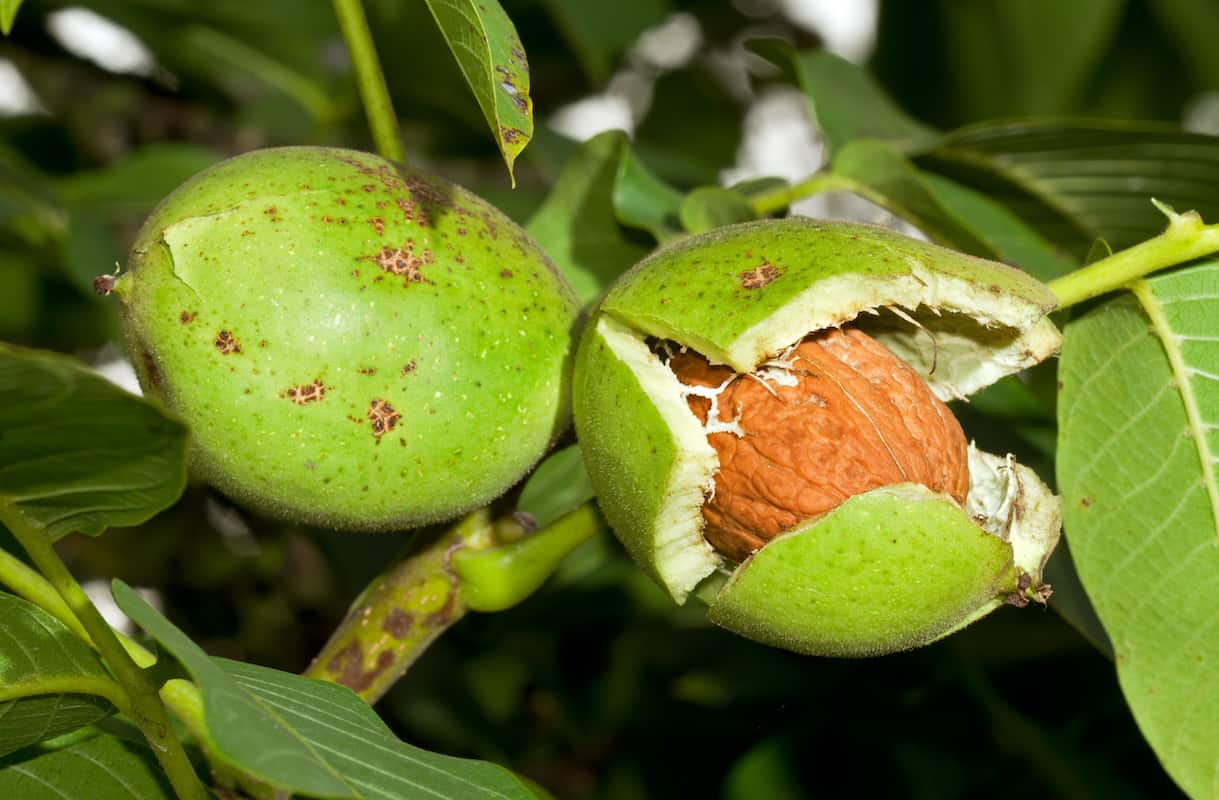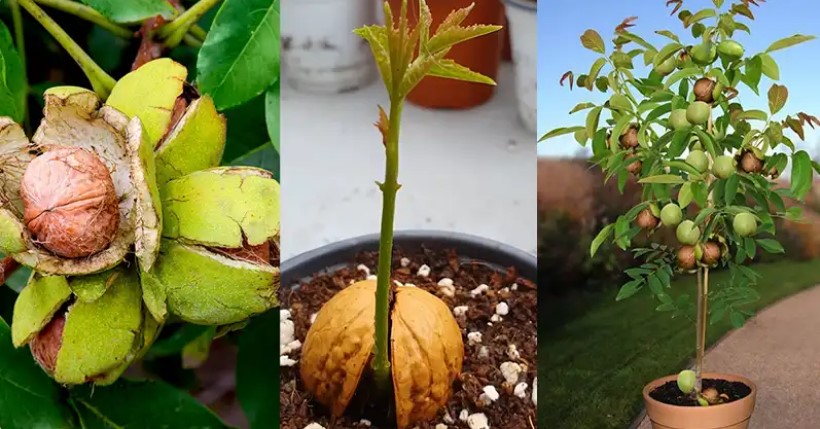Walnut trees are celebrated for their delectable nuts and their prized, elegant wood. Cultivating a walnut tree from a seed can be a fulfilling and eco-conscious venture. This all-encompassing guide offers a step-by-step approach to help you grow a walnut tree from a seed. It covers various germination techniques, and offers vital insights to ensure the success and health of your walnut tree.

Step 1: Assemble Your Supplies
Before diving into the process, make sure you have the following materials at hand:
- Walnut seeds (gathered from mature walnuts)
- A pot or container for planting
- High-quality potting soil
- Plastic wrap or a plastic bag
- A sunny location or a grow light
- Watering can or spray bottle
- Pruning shears (for later stages)
Step 2: Seed Selection
Select robust and mature walnut seeds. These can be obtained from the wild, purchased online, or collected from a mature walnut tree. Ensure the seeds are fully developed, plump, and free from any damage or mold.
Step 3: Germination Methods
There are various methods to germinate walnut seeds. Here are three common approaches:
Method 1: Cold Stratification
- Fill a container with potting soil, leaving an inch of space at the top.
- Plant the walnut seed approximately an inch deep.
- Moisturize the soil, ensuring it’s damp but not saturated.
- Cover the container with plastic wrap or place it inside a plastic bag.
- Refrigerate the container for 8-12 weeks, mimicking winter conditions.
- After the stratification period, move the container to a sunny location or use a grow light.
Method 2: Soak and Plant
- Soak the walnut seeds in water for 24-48 hours to soften the outer shell.
- Plant the seeds about an inch deep in a container filled with potting soil.
- Dampen the soil, but avoid making it soggy.
- Place the container in a sunny location or use a grow light.
Method 3: Fall Planting
- In the fall, plant the walnut seeds directly in the ground where you want your tree to grow.
- Dig a hole about two inches deep and place the seed inside.
- Cover it with soil and mark the spot.
- Wait for spring, and the walnut tree will begin to emerge.
Step 4: Care and Maintenance
Regardless of the germination method chosen, nurturing walnut seedlings necessitates proper care:
- Maintain consistently damp soil, avoiding waterlogging.
- Ensure 6-8 hours of sunlight or adequate grow light exposure daily.
- Transplant seedlings into a larger container or preferred outdoor location when they reach 4-6 inches in height.
- Safeguard young trees from pests and animals with fencing or netting.
- Prune any dead or diseased branches as the tree matures.
- Regularly fertilize the tree with a balanced, slow-release fertilizer.
Step 5: Transplanting Outdoors
When your walnut tree is approximately 2-3 years old and stands at a height of around 3-4 feet, it’s time to transplant it to its permanent outdoor location. Follow these steps:
- Choose a sunny location with well-draining soil.
- Dig a hole twice as wide as the root ball and of similar depth.
- Carefully extract the tree from its container, avoiding root disturbance.
- Place the tree in the hole, ensuring the root ball’s top is level with the ground surface.
- Backfill the hole with soil, gently tamping it down as you go.
- Thoroughly water the tree to settle the soil.
Conclusion:
Growing a walnut tree from a seed is a gratifying and eco-friendly pursuit. By adhering to these guidelines and selecting the germination method that suits you best, you can nurture a walnut tree that will provide shade, exquisite wood, and scrumptious nuts for generations to come. With patience and proper care, watch your walnut tree flourish into a splendid and bountiful addition to your garden or landscape.










